News (799)
Children categories
ES! Initiatives (74)
EarthSolidarity!™ Initiatives are endeavors to which anyone can contribute in deed as well as in spirit, that
- minimize waste and environmental impacts
- increase community resilience
- respect and protect ecosystem processes and all forms of life
- contribute to good living conditions for everyone around the globe
- affirm and celebrate our interdependence and interrelatedness in the Web of Life!
Join TWRA and allies at the first Tennessee Biodiversity Summit
Written by Lee Wilmot![Tennessee Biodiversity Summit Logo]() Participants will learn about state wildlife plans, educational techniques and efforts to stem declining biodiversity across the state and Southeast
Participants will learn about state wildlife plans, educational techniques and efforts to stem declining biodiversity across the state and Southeast
Lee Wilmot is a TWRA public information officer.
MURFREESBORO — The Tennessee Wildlife Resources Agency announces the inaugural Tennessee Biodiversity Summit, an event celebrating the state’s rich habitats and multitude of species.
The summit is set for 8 a.m. to 4 p.m. Oct. 22 at Middle Tennessee State University. All wildlife enthusiasts, including experts, birdwatchers, hunters, and anyone with an interest in nature, are invited to participate in this experience packed with opportunities to learn about wildlife, habitats, and conservation in Tennessee.
Eight dynamic speakers will deliver presentations centered on this year’s theme, Tennessee’s Biodiversity: Past, Present, and Future, highlighting some of the current wildlife projects taking place across the state. Participants will also learn about the updated State Wildlife Action Plan, a federally guided blueprint to prevent the decline of biodiversity. This plan engages a broad array of partners, including other government agencies, conservation groups, private landowners, and others in the development process, many of which will be educating at the event.
Updated 10/9: Multiple entities extend funding to Great Smoky Mountains National Park for 10 days
Written by Jim Matheny The crest of the Great Smoky Mountains is seen from the Foothills Parkway looking east. Thomas Fraser/Hellbender Press
The crest of the Great Smoky Mountains is seen from the Foothills Parkway looking east. Thomas Fraser/Hellbender PressLocal and state partners will continue funding $61,703.18 daily for 10 days during shutdown
Jim Matheny is Friends of Great Smoky Mountains National Park communications director.
Friends of the Smokies is among several partners that have provided support to fully open the park during the shutdown, including the state of Tennessee, the Tennessee Department of Tourist Development, Sevier County, Blount County, Cocke County, the Eastern Band of Cherokee Indians, and the cities of Gatlinburg, Pigeon Forge, and Sevierville.
Friends of the Smokies is a nonprofit partner of the national park funded by generous donations and specialty license plates. It funds projects, programs, equipment, and staffing the national park cannot afford with its normal annual budget.
- government shutdown
- great smoky mountains national park
- friends of the smokies
- smokies funding
- smokies funding partnership
- is gsmnp closed?
- are the smokies closed?
- sevier county
- blount county
- state of tennessee
- is cades cove open
- government shutdown national parks
- gatlinburg
- smokies restrooms
- eastern band of cherokee indians
- jim matheny
Updated: Gatlinburg Spur reopens in Smokies
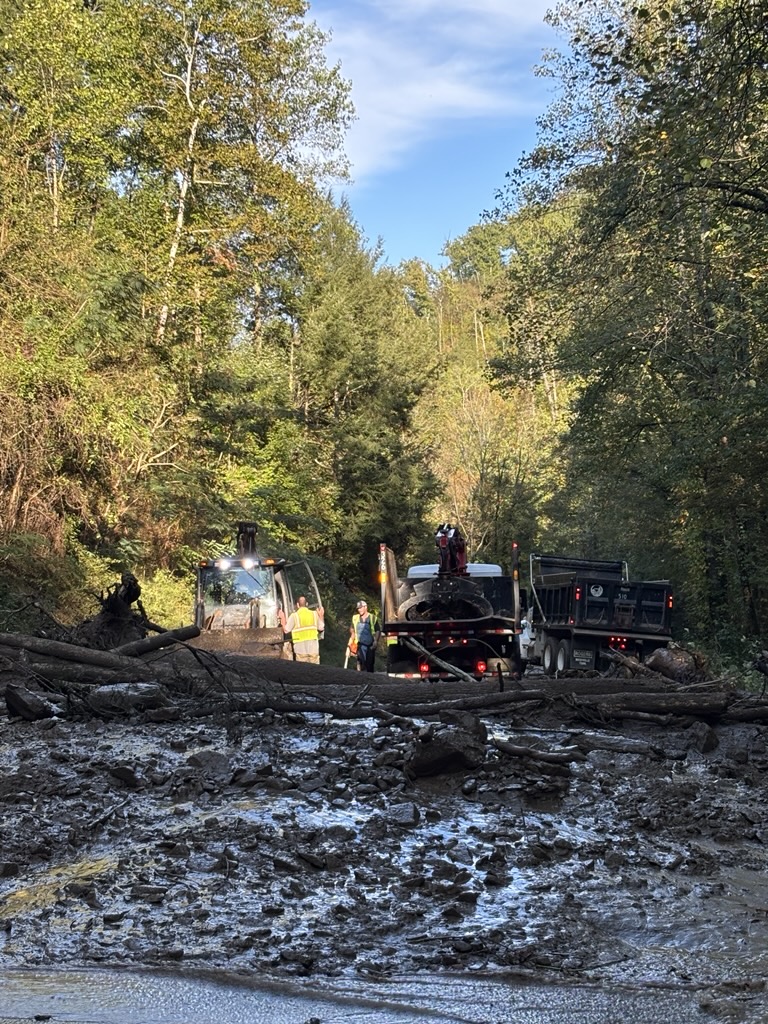 National Park Service
National Park Service The original article continues below.
 Photo illustration by Abeth Stambaugh/Hellbender Press
Photo illustration by Abeth Stambaugh/Hellbender Press
As UT acts against professor who privately posted hateful things about Charlie Kirk, has law prof with own social blunder gone full apparatchik?
KNOXVILLE — It didn’t take long for the fallout from Charlie Kirk’s murder to land in Big Orange country.
Just five days after Kirk’s life was tragically snuffed out by a sniper’s bullet, the University of Tennessee announced the commencement of termination proceedings against anthropology professor Tamar Shirinian for allegedly making grossly inappropriate comments on social media about Kirk’s killing.
(WBIR reported that a chastened Shirinian has since apologized and implored the university via letter to chancellor Donde Plowman to reconsider its decision.)
First of all — to be resoundingly clear — I’m disgusted by Shirinian’s behavior and don’t feel much sympathy for her. After learning of Kirk’s death, she posted: “The world is better off without him in it. Even those who are claiming to be sad for his wife and kids....like, his kids are better off living in a world without a disgusting psychopath like him and his wife, well, she's a sick f—- for marrying him so I dont care about her feelings.”
Shirinian’s comments were needlessly cruel, grotesque, and misanthropic. Nonetheless, I have some serious questions about how UT has handled this case, and I’ve resolved to pose them even though I fear I may end up in hot water for doing so. This is the Golden Age of Canceling, after all, and I’ve been told since I was a kid that I have a preternatural ability to tick off authority figures. Of course, that also means I’ve had lots of practice basking in stew pots.
With that in mind, let me ask my conservative friends how they would react if some Far Left, “woke” professor had watched footage of the crowd gathered around the capitol on January 6, 2021, and tweeted the following message to nearby motorists: “Run them down!”
Options abound to celebrate Public Lands Day
Written by Hellbender Press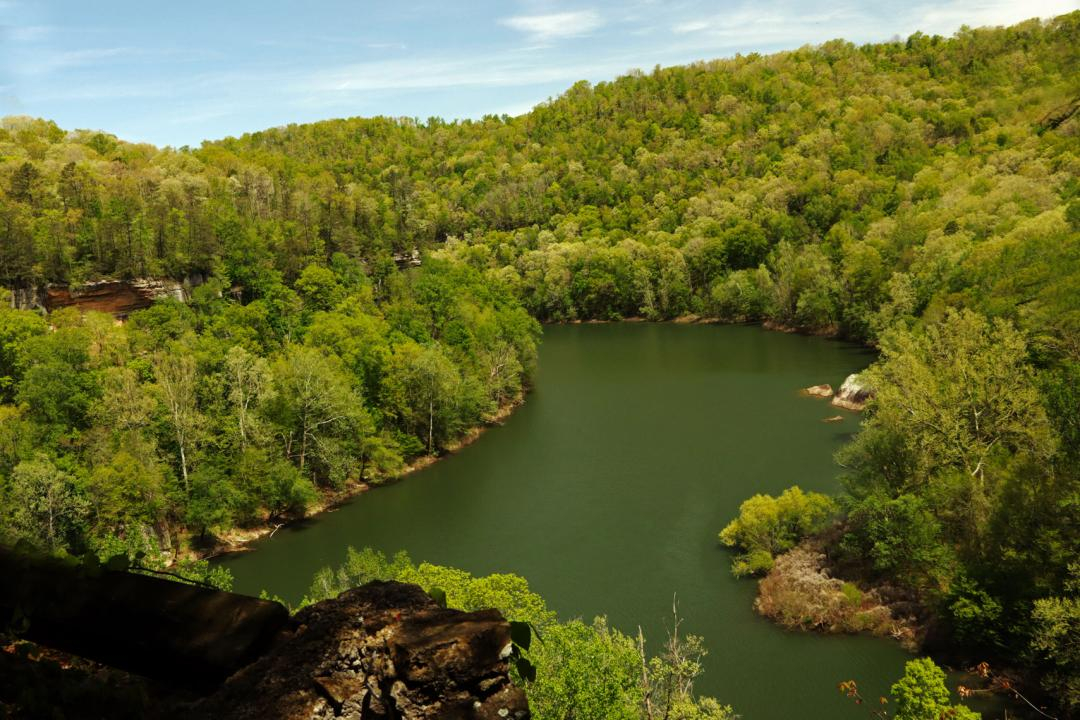 Public land in the Cumberland region includes Big South Fork National River and Recreation Area, seen here from the Yahoo Falls Trail Overlook. Yaeger Rich via National Park Service
Public land in the Cumberland region includes Big South Fork National River and Recreation Area, seen here from the Yahoo Falls Trail Overlook. Yaeger Rich via National Park Service
Celebrate our common natural and national heritage this weekend
ONEIDA — Get outdoors and take part in the celebration of National Public Lands Day with Big South Fork National River and Recreation Area on Sept.27. All backcountry camping permits are half off for this date.
Elsewhere, Great Smoky Mountains National Park offers several volunteer opportunities and is suspending fees for the day. A Leave-No-Trace popup educational exhibit is planned for 8 a.m. to 2 p.m. at Sugarlands Visitor Center.
Enjoy a night under the stars in the backcountry of Big South Fork NRRA by obtaining a backcountry camping permit in person at one of our contact stations or online. These permits are good for a stay of up to 14 days.
National Public Lands Day is the nation’s largest, single-day volunteer event in which federal agencies as well as other groups partner together to maintain and care for the environment.
Share your experience on social media with the hashtag #NPSVolunteer, #FindYourPark and #NPLD.
TWRA probes 20th boating fatality of 2025
JOHNSON CITY — The Tennessee Wildlife Resources Agency (TWRA) is investigating a fatal boating collision on South Holston Lake on Saturday, Sept. 20.
At 9:45 p.m. a bass boat carrying two people struck a pillar of the Hwy. 421 bridge. The collision resulted in the death of the passenger and left the operator with serious injuries.
The operator was airlifted to Johnson City Medical Center, while the passenger, Ronald E. Taylor, 72, of Virginia, was dead at the scene. The medical examiner will be conducting an autopsy.
TWRA extends its gratitude to the Sullivan County Sheriff’s Office, Sullivan County Rescue Squad, Bristol Life Saving Crew, and a local volunteer fire department for their assistance.
This incident marks the 20th boating-related fatality on Tennessee’s waterways in 2025. The investigation continues.
-TWRA
Updated: Smokies searchers find body of missing Nashville man
Written by Hellbender Press
Search centered on Big Creek area near TN/NC line
HARTFORD — Park rangers and others searching for a 21-year-old man found his body in the Big Creek area of Great Smoky Mountains National Park. Ryan Lakes was last seen Sept. 18 in Nashville. His vehicle was found in the park on Sept. 20.
In an update on the search Monday afternoon, the park service released the following statement:
"Ryan Lakes was found deceased at approximately 2:45 p.m. on Sept. 21 in the Big Creek area of Great Smoky Mountains National Park.
“Lakes, age 21, was last seen Thursday, Sept. 18 in Nashville, TN and his vehicle was found in the Big Creek area of the park on Sept. 20. Park rangers and local agencies completed an initial search on Sept. 20 and continued search efforts on Sept. 21.“
 Elk are native to the Southern Appalachians, but overhunting and poor management led to its extirpation by the turn of the 20th century. Elk can now be seen throughout the park, and the park service warns visitors the animals can be dangerous during the autumn rut. Bill Pattison/National Park Service
Elk are native to the Southern Appalachians, but overhunting and poor management led to its extirpation by the turn of the 20th century. Elk can now be seen throughout the park, and the park service warns visitors the animals can be dangerous during the autumn rut. Bill Pattison/National Park Service
Elk flourish -- and put on a show -- in Great Smoky Mountains National park 25 years after reintroduction
Kenzie Connor is a National Park Service communications officer.
GATLINBURG —The annual elk breeding season, known as the rut, is underway in Great Smoky Mountains National Park. The rut can be exciting to witness, but it can also be dangerous, as elk are especially unpredictable during this time.
Park visitors should exercise extra caution and respect all wildlife regulations as they visit the park this season.
During the rut, male elk (bulls), experience heightened testosterone levels and are more likely to exhibit defensive behavior as they compete for dominance. Bulls will charge or challenge anything they perceive as a threat, including people and vehicles. Female elk (cows), remain protective of their calves, adding to the overall stress amongst elk herds.
In Virginia, Master Naturalists celebrate 20 years of stewardship and community
Written by By Chris Moody Volunteers in the Holston Rivers Chapter of the Virginia Master Naturalists learned about freshwater mussels and other aquatic organisms at an event where they were in the water, examining the natural habitats. Monica Hoel
Volunteers in the Holston Rivers Chapter of the Virginia Master Naturalists learned about freshwater mussels and other aquatic organisms at an event where they were in the water, examining the natural habitats. Monica Hoel
Become a master of your domain; courses available in ET and WNC
BLACKSBURG — Two decades after its start, the Virginia Master Naturalist program continues to empower volunteers to protect and enhance the state’s natural resources.
Launched in 2005 as part of a growing national movement, the Virginia Master Naturalist program trains residents in ecology, wildlife, and environmental stewardship. Operated by Virginia Cooperative Extension and housed in the College of Natural Resources and Environment at Virginia Tech, the program has grown to 30 chapters across the commonwealth.
“The program emerged from a national push to establish Master Naturalist initiatives in every state,” said Michelle Prysby, the program's director and senior Extension specialist. “A framework was created in 2004 by five state agencies, and Virginia Tech was selected to lead the program.”
In East Tennessee, at least two Master Naturalist training programs are available; there are also several naturalist programs in Western North Carolina.
- southeastern master naturalist programs
- what can i learn as a master naturalist
- knoxville master naturalist classes
- virginia tech college of natural resources and environment
- western north carolina master naturalist classes
- holston rivers chapter of the virginia master naturalists
- how can i learn about nature
Conservation allies save Hatchie River watershed from auction block
Written by Jon D. Bumpus The Hatchie River in McCrairy County, Tennessee is known for both its ecological value and its recreational value. TennGreen Land Conservancy
The Hatchie River in McCrairy County, Tennessee is known for both its ecological value and its recreational value. TennGreen Land Conservancy
TennGreen secures protection for last unchanneled tributary of Mississippi River
Jon. D. Bumpus is TennGreen Land Conservancy communications director.
SELMER — TennGreen Land Conservancy, The Nature Conservancy in Tennessee, and The Conservation Fund joined forces to protect 1,273 acres of ecologically rich bottomland hardwood forest and wetlands along the Hatchie and Tuscumbia rivers in McNairy and Hardeman counties. The conservation of this land is a milestone achievement in one of Tennessee’s most treasured and threatened river systems.
Late in the fall of 2024, the Hatchie River Conservancy alerted TennGreen that the property was headed to auction in just two weeks. Time was of the essence. The tract, slated for sale in six parcels, each in separate auctions, was at risk of becoming permanently fragmented. TennGreen and partners negotiated a delay, secured an appraisal, made a direct offer, and successfully canceled the auction.
In 2025, the property was officially acquired, funded in part by the Heritage Conservation Trust Fund, and is now under the jurisdiction of the Tennessee Wildlife Resources Agency (TWRA). This landscape will become a publicly accessible Wildlife Management Area, providing not only critical habitat but also new opportunities for outdoor recreation in West Tennessee.
Flowing freely through the hills and bottomlands of six Tennessee counties, the Hatchie River is the last unchanneled, free-flowing tributary of the lower Mississippi River. Its 238 miles wind through dense forests, canebrakes, and swamps, supporting astonishing biodiversity.
Ijams hails bats — lots of bats — with new habitat house
Written by JJ Stambaugh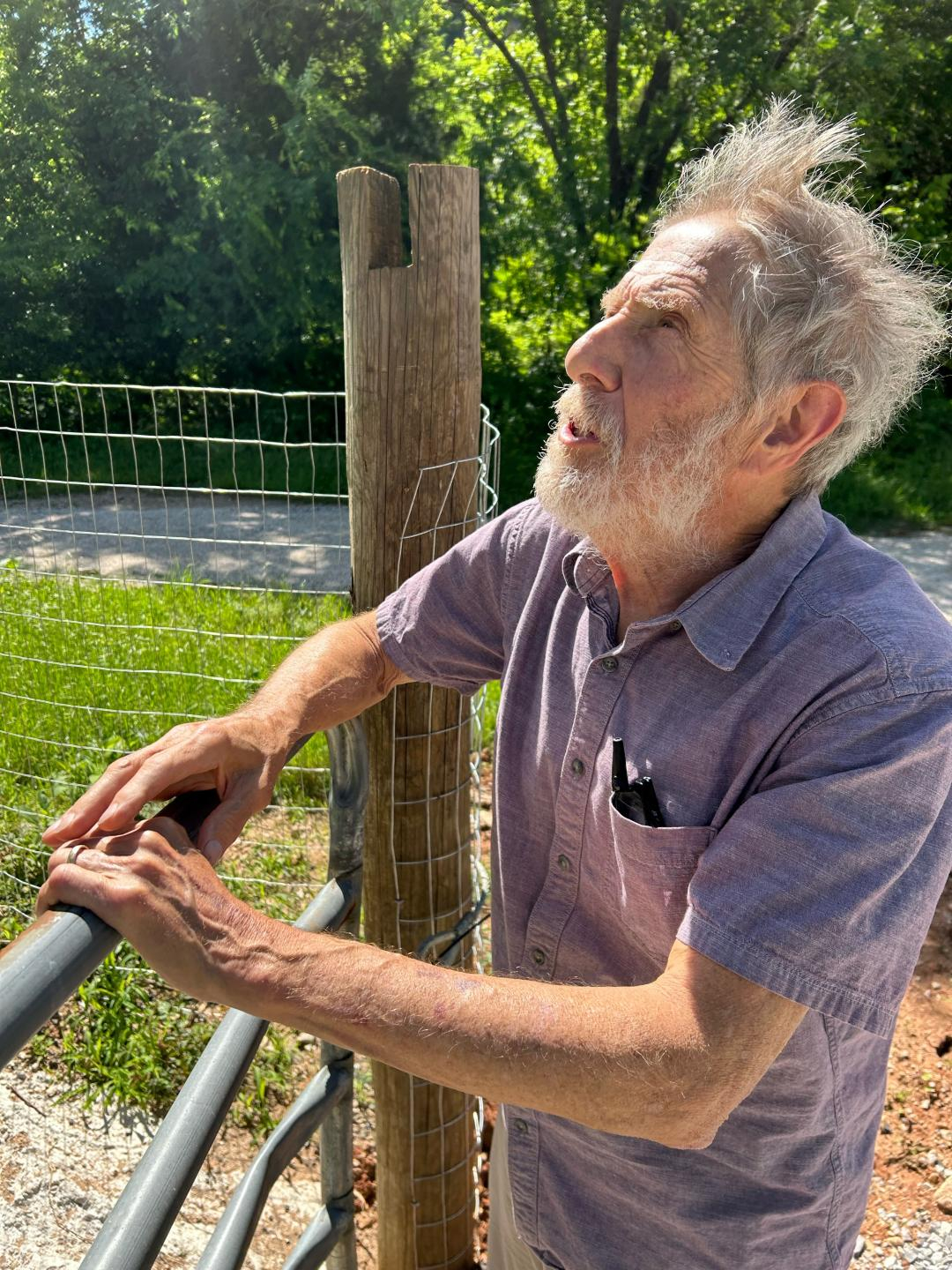 University of Tennessee professor emeritus Gary McCracken is seen this summer near the new massive bat house built at Ijams Nature Center in Knoxville. McCracken, who will help with research at the site, spent his life studying bats; he attributes their northward migration to climate change and warns of critical pest-control gaps if bats continue their decline. J.J. Stambaugh/Hellbender Press
University of Tennessee professor emeritus Gary McCracken is seen this summer near the new massive bat house built at Ijams Nature Center in Knoxville. McCracken, who will help with research at the site, spent his life studying bats; he attributes their northward migration to climate change and warns of critical pest-control gaps if bats continue their decline. J.J. Stambaugh/Hellbender Press
New exhibit will host research into critical pest-control species; could attract 200,000 bats to urban wildlife refuge
Bat, bat,
Come under my hat,
And I'll give you a slice
of bacon;
And when I bake
I'll give you a cake,
If I am not mistaken.
— Traditional nursery rhyme
KNOXVILLE — Of all the critters that share this Earth with Homo sapiens, bats might have the most schizophrenic reputation of all.
Depending on who you ask, bats — of which there are at least a dozen species in East Tennessee alone — are seen as creepy, adorable, weird, useful or diseased. Opinions may vary, but the one thing that most folks might agree upon is that bats are, well, fascinating.
And that’s a good thing for local nature lovers, because up to 200,000 of them should soon be living at South Knoxville’s own nonprofit wildlife sanctuary, Ijams Nature Center.
Under the direction of University of Tennessee professor emeritus Gary McCracken and Ijam’s conservation director, Ben Nanny, a bat house has been constructed near Meads Quarry that’s expected to attract a large colony of Mexican free-tailed bats that will prove to be a delight for Ijams visitors.
- bat house
- ijams nature center
- mccracken bat research
- knoxville bats
- where can i see bats
- are bats good or bad
- gary mccracken
- ijams bat house
- mexican freetailed bat
- tadarida brasiliensis
- bat tower at meads quarry
- bats and climate change
- bats are not blind
- bats good for agriculture
- economic value of bats
- pest control with bats
This weekend: Enjoy music, nature and protest at Reclaim the Ridge
Written by Hellbender Press
Allies come together to fight Enbridge’s Ridgeline gas pipeline through Obed watersheds
LANCING — Reclaim the Ridge is a weekend of music, nature, fun and action to raise awareness and funds in opposition to Enbridge’s proposed Ridgeline gas pipeline — set to slice across 122 miles of Tennessee and make 162 waterway cuts through tributaries of the Obed Wild and Scenic River system.
Project opponents and the like-minded plan to gather for Reclaim the Ridge Sept. 5-6 at the Lilly Pad Hopyard Brewery for an unforgettable time featuring live music by The Local Honeys, camping, hiking, swimming and giant puppets from the Cattywampus Puppet Council!
Swap seeds and stories and sample local pawpaws at first Pawpaw Festival
KNOXVILLE — Multiple wildcrafters, seed collectors and general treehuggers — and wild critters — here and throughout the Southern Appalachians are really getting into wild pawpaw trees and their fruit.
Asimina triloba, the American papaw, is native to hardwood forest understories of the eastern United States, including the rich oak, hickory and maple forests of the Appalachians. It can be cultivated on private land or urban food plots, and of course grows richly in area forests. Its fruit is widely described as custard-like in texture.
There is a growing critical mass of pawpaw fans to meet occasionally and swap seed and its Knoxville’s turn to recognize the humble yet mighty local fruit. The first of what is planned to be an annual event is set 6 p.m. Aug. 31 at the Trailhead Beer Market, 1317 Island Home Ave.
Feds award expedited work on Newfound Gap Road after latest regional weather disaster
Written by Katie Liming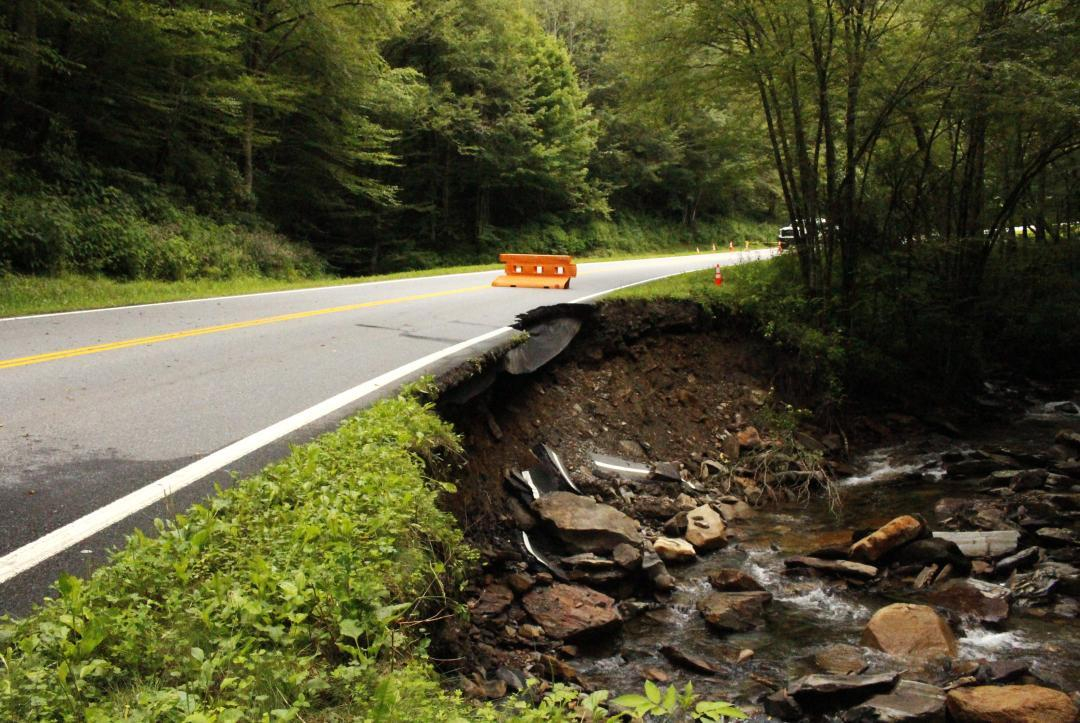
US 441 from Sugarlands to Newfound Gap expected to reopen by end of September after heavy rains wash out roadway
Katie Liming is a public information officer with the National Park Service.
GATLINBURG — The National Park Service and the Federal Highway Administration continue to work quickly to repair the road washout on US 441/Newfound Gap Road. The FHWA has awarded the contract to Eclipse Companies, LLC, and the NPS and FHWA held a pre-construction meeting with the contractor on Friday. The contractor was expected to begin mobilizing equipment and supplies this week.
Construction is expected to be completed on or before September 30.
The park responded Aug. 1 to reports of a road washout and landslide event on Newfound Gap Road between mile marker 12 and 13 on the Tennessee side of the park (south of Alum Cave trailhead).
The affected area spans about 125 feet and has significantly undercut nearly the entire width of the southbound lane. On August 2, NPS and FWHA engineers visited the slide and immediately began project scoping. Both agencies worked quickly to complete the required steps of the design, permitting and contracting processes for construction.
- us 441/newfound gap road
- smokies heavy rain
- us 441 closed
- can i drive through smokies
- sugarlands
- great smoky mountains national park
- great smoky mountains national park climate change
- smokies storm damage
- smokies travel conditions
- smokies news
- shuttle services in great smoky mountains national park
- smokies shuttle
Helene: Colquitt Foundation gives $750,000 for ongoing recovery in Smokies
Written by Jim Matheny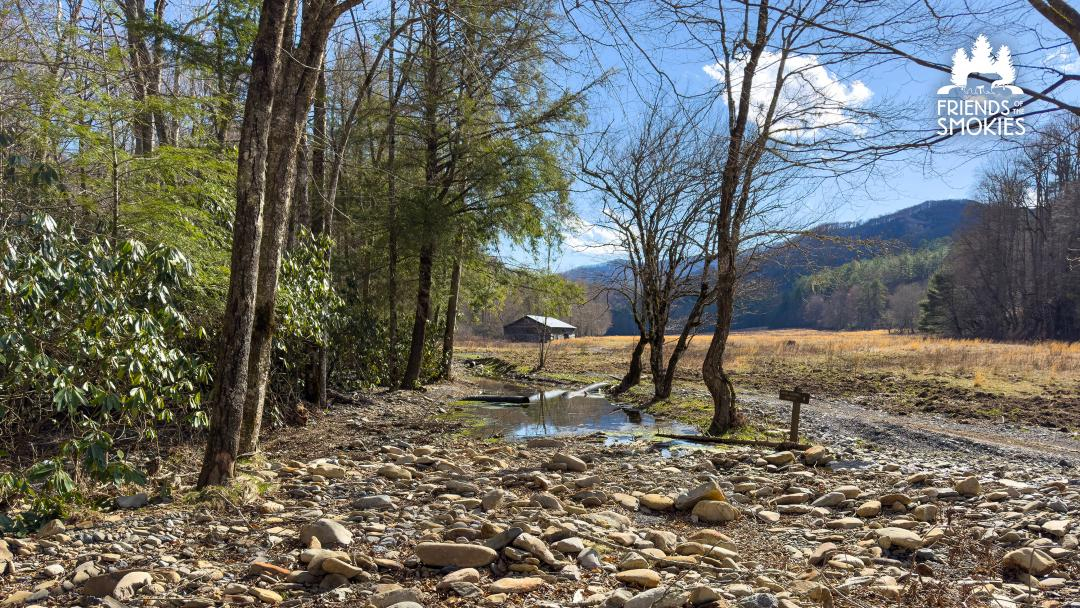 Damage to Cataloochee Road with the Caldwell Barn in the background in Great Smoky Mountains National Park. Repairs following Tropical Storm Helene continue and will be supported by a grant from the Colquitt Foundation. Friends of the Smokies
Damage to Cataloochee Road with the Caldwell Barn in the background in Great Smoky Mountains National Park. Repairs following Tropical Storm Helene continue and will be supported by a grant from the Colquitt Foundation. Friends of the Smokies
$750K donation to Friends of the Smokies part of a larger $2 million commitment to assist Hurricane Helene recovery
Jim Matheny is Friends of the Smokies communications director.
KODAK — Reflecting a longtime devotion to Great Smoky Mountains National Park, The Colquitt Foundation has given $750,000 to the nonprofit Friends of the Smokies to save historic structures and help the national park’s Cataloochee Valley recover from damage caused by Hurricane Helene.
“Hurricane Helene left its mark on Cataloochee Valley. Cataloochee Ranch was founded in that valley, and we feel a responsibility to help. We are honored to partner with Friends of the Smokies to contribute towards its revival and restoration,” David Colquitt said.
The Colquitt Foundation made the gift on behalf of The Swag as well as Cataloochee Ranch, two historic mountain retreats operated by the Colquitts on the boundary of Great Smoky Mountains National Park in Haywood County, North Carolina.
“Cataloochee Valley is a jewel for our entire region. Its cultural, historical, environmental and recreational value is something that cannot be replaced. On behalf of our 150+ Haywood County team members, we are honored to make this contribution,” Annie Colquitt said.
The $750,000 gift to Friends of the Smokies will fund restoration of historic structures damaged by Hurricane Helene in September 2024, including cabins and barns from Cataloochee to Cosby. Through the Forever Places program, these critically needed funds will provide materials, supplies and support for a skilled staff of historic preservation experts to make the needed repairs.
- hurricane helene
- hurricane helene cataloochee
- hurricane helene smokies
- hurricane economic loss
- hurricane helene western north carolina
- colquitt foundation
- the swag
- david colquitt
- caldwell barn cataloochee
- helene repairs in smokies
- dana soehn
- friends of great smoky mountains national park
- friends of the smokies
- beech grove school
- cataloochee ranch
More...
Incredible Farm Dinner Downtown
Last year’s Annual Incredible Farm Dinner Downtown had to be cancelled because of Hurricane Helene.
The already legendary Greeneville tradition celebrates local farms and community. It’s hosted by the Rural Resources Farm & Food Education Center. Many local sponsors, businesses, farms, churches and the Town of Greeneville make this event possible. Get your tickets early! The dinner sells out every year, a testament to its success and the value of the Rural Resources programming it supports.
Maryville honors East Tennessee conservation giant with fields and forests
Written by Allison Lester A public park planned along U.S. 321 in Maryville will honor East Tennessee conservation legend Billy Minser. Linda Albert via social media
A public park planned along U.S. 321 in Maryville will honor East Tennessee conservation legend Billy Minser. Linda Albert via social media
The park will host hiking trails and natural areas for the public to enjoy
MARYVILLE — The city and Foothills Land Conservancy (FLC) have partnered on the creation of Billy Minser Park, a new 23-acre public green space set to open in 2025 off U.S. 321 in Blount County.
The property for the park was donated by the late Catherine Gilreath to FLC and the City of Maryville with the shared goal of creating a space for public enjoyment and environmental education. The park is under a conservation easement — meaning it will be protected from development forever.
When complete, Billy Minser Park will feature hiking and walking trails along a scenic creek corridor through forests and open fields. It will serve as a place for the community to connect with nature while preserving local habitat.
The park honors William “Billy” Minser — a beloved conservationist, educator and long-time FLC board member whose career has spanned decades in forestry, wildlife management and land preservation.
Land donation protects Obed-area wildlands on eastern fringes of Cumberland Plateau
Written by Ben Pounds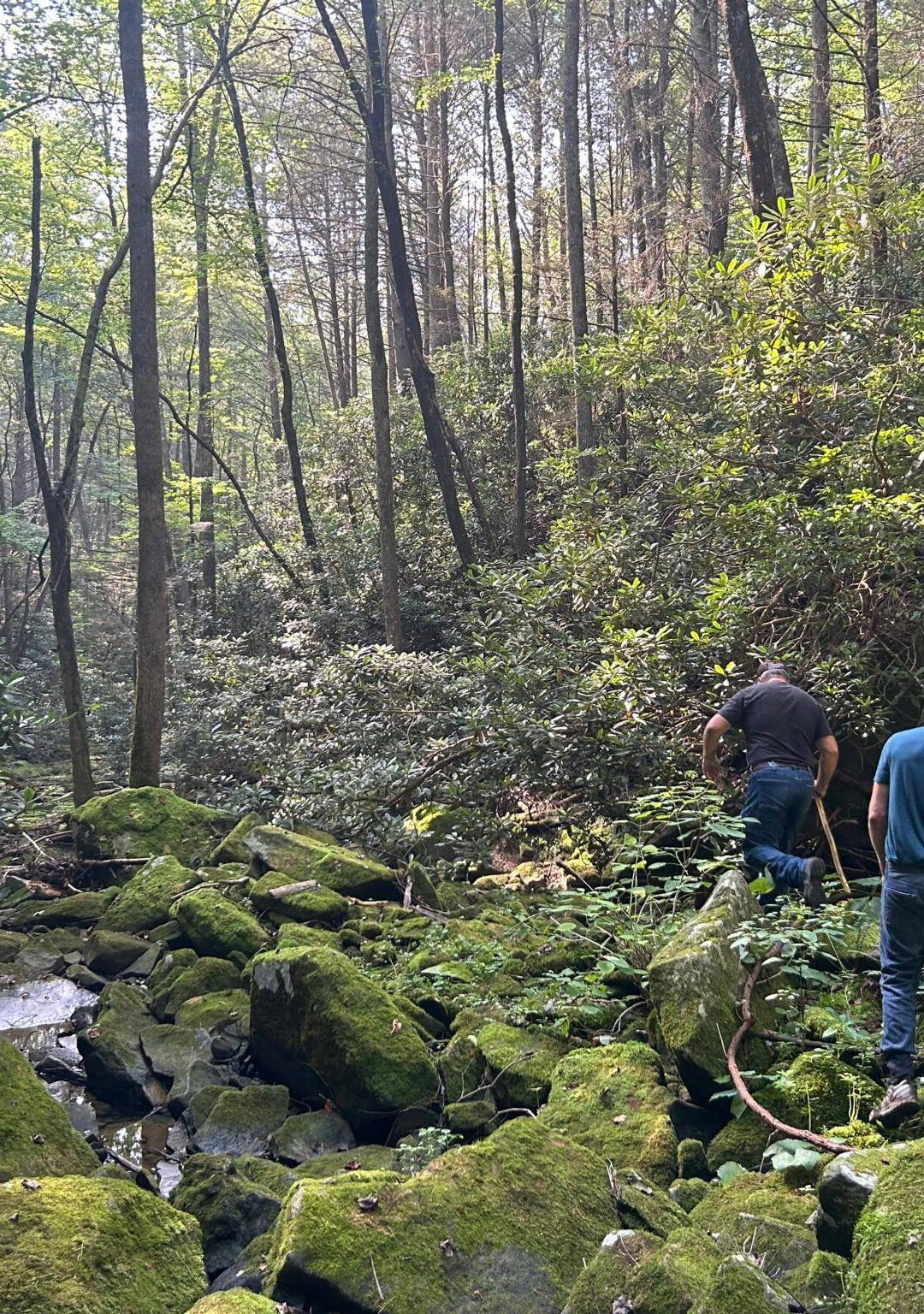 Hikers walk along Ramsey Creek during a dry time. Tennessee Citizens for Wilderness Planning has assembled land to be turned over to the National Park Service to expand public lands at the Obed Wild and Scenic River. Chuck Estes/Tennessee Citizens for Wilderness Planning
Hikers walk along Ramsey Creek during a dry time. Tennessee Citizens for Wilderness Planning has assembled land to be turned over to the National Park Service to expand public lands at the Obed Wild and Scenic River. Chuck Estes/Tennessee Citizens for Wilderness Planning
There’s more room to roam in the Cumberlands thanks to Oak Ridge-based citizens group
WARTBURG — As East Tennesseans and tourists alike enjoy summer fun on the wild Obed River, enthusiasts are growing its amount of federally protected land.
Part of the U.S. National Park Service system, the Obed Wild and Scenic River in Cumberland and Morgan Counties on Tennessee’s Cumberland Plateau offers swimming, hiking, picnicking, kayaking, fishing and climbing at the federally protected park. It currently includes about 45 miles along streams like the Obed and Emory Rivers.
Residents of Oak Ridge, a little less than an hour’s drive away, created Tennessee Citizens for Wilderness Planning (TCWP) and lobbied to create the federally protected area in 1976. Now, the same group, through fundraising and land swaps with anonymous private individuals, has gained 30 acres on which it plans to build a trail connected to the federal land.
- obed national wild and scenic river
- tennessee citizens for wilderness planning
- tennessee land preservation
- cumberland mountain quail
- cumberland plateau
- cumberland hiking
- new hiking trails in east tennessee
- hiking in tennessee
- recreation
- fishing
- kayaking
- climbing
- ramsey creek
- national park service
- hellbender
- citizen action
Network alert: Tennessee Sustainability Conference set for Gatlinburg
Written by Cindy Dupree Holloway The towering Space Needle in Gatlinburg offers views of Great Smoky Mountains National Park. The city is host to the Tennessee Sustainability Conference set to begin Aug. 20. Gatlinburg Chamber of Commerce
The towering Space Needle in Gatlinburg offers views of Great Smoky Mountains National Park. The city is host to the Tennessee Sustainability Conference set to begin Aug. 20. Gatlinburg Chamber of Commerce
Conservation education event is hosted in part by Tennessee Chamber to address sustainability challenges
GATLINBURG — The annual Tennessee Sustainability Conference is scheduled to take place Aug. 20-22 at the Park Vista Hotel. The conference is a partnership among Tennessee Recycling Coalition, Tennessee Chamber of Commerce and Industry, and Tennessee Environmental Conference. It brings together environmental professionals from across the region.
Nearby Great Smoky Mountains National Park is an internationally known treasure trove of biodiversity and accompanying sustainability research.
“The three-day event will provide attendees an accelerated learning opportunity featuring the latest trends and best practices in environmental sustainability,” said Tennessee Recycling Coalition Executive Director Amber Greene. “Staying on the cutting-edge of our ever-growing industry is essential to improving the lives of all Tennesseans. I encourage environmental leaders across the state to join us.”
According to organizers, the event will bring environmental professionals, decision-makers, government officials, business and industry leaders, attorneys, consultants, engineers, developers, architects, agribusiness leaders, energy experts, water planning districts, universities, public health officials, and solid waste and recycling experts, from across the region to learn about the latest trends and best practices in environmental sustainability.
- tennessee sustainability conference
- gatlinburg events
- sustainability education
- sustainability research
- sustainable agriculture
- sustainability
- tennessee recycling coalition
- amber greene
- park vista hotel
- learn about sustainability
- brownfield program
- brownfield remediation
- tire disposal
- green events knoxville
- solid waste
- mayors retreat gatlinburg
- great smoky mountains national park
- science research

 Participants will learn about state wildlife plans, educational techniques and efforts to stem declining biodiversity across the state and Southeast
Participants will learn about state wildlife plans, educational techniques and efforts to stem declining biodiversity across the state and Southeast
